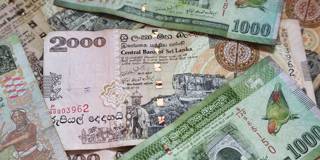Sri Lanka has long been prone to macroeconomic instability as a result of its deep social and political divisions. If the country's newly elected president, Gotabaya Rajapaksa, pursues policies that perpetuate these divisions, macroeconomic stability will remain elusive.
CAMBRIDGE – As Sri Lanka makes another crucial political transition, it faces a major risk of macroeconomic instability. Minimizing that risk will depend, above all, on whether the country’s newly elected president, Gotabaya Rajapaksa, can defy his reputation and embrace inclusive politics.
This idyllic island in the Indian Ocean was once a star performer. In the years following independence in 1948, progress on leading social indicators such as poverty, infant mortality, and primary education put Sri Lanka well ahead of its neighbors – India, Pakistan, and Bangladesh – and was the envy of much of the developing world. But, for several decades now, divisiveness and conflict have been the serpent in this paradise.
As a result, Sri Lanka has been strikingly prone to macroeconomic instability. According to data compiled by Carmen Reinhart and Christoph Trebesch, the country has spent nearly 70% of the last four decades in macroeconomic stabilization programs with the International Monetary Fund. In South Asia, only Pakistan has spent a greater proportion of this period under the IMF’s supervision. Bangladesh has had Fund programs around 50% of the time, and appears to have graduated from IMF tutelage in 2015. And India has had IMF programs only about 15% of the time, and none since 1995.

CAMBRIDGE – As Sri Lanka makes another crucial political transition, it faces a major risk of macroeconomic instability. Minimizing that risk will depend, above all, on whether the country’s newly elected president, Gotabaya Rajapaksa, can defy his reputation and embrace inclusive politics.
This idyllic island in the Indian Ocean was once a star performer. In the years following independence in 1948, progress on leading social indicators such as poverty, infant mortality, and primary education put Sri Lanka well ahead of its neighbors – India, Pakistan, and Bangladesh – and was the envy of much of the developing world. But, for several decades now, divisiveness and conflict have been the serpent in this paradise.
As a result, Sri Lanka has been strikingly prone to macroeconomic instability. According to data compiled by Carmen Reinhart and Christoph Trebesch, the country has spent nearly 70% of the last four decades in macroeconomic stabilization programs with the International Monetary Fund. In South Asia, only Pakistan has spent a greater proportion of this period under the IMF’s supervision. Bangladesh has had Fund programs around 50% of the time, and appears to have graduated from IMF tutelage in 2015. And India has had IMF programs only about 15% of the time, and none since 1995.